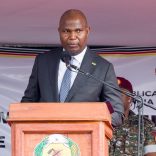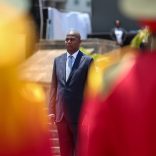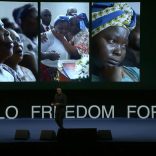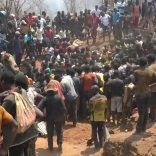Mozambique: President rejects violence to solve conflict on anniversary of Mueda massacre
CIP Mozambique Elections: Blogger shot dead while live on Facebook; Election supplier wants $47,812 per day

- Lexton/Artes Gráficas demands $47,812 per day penalty for unpaid electoral materials bill
The Lexton/Artes Gráficas consortium on 3 December sent the National Elections Commission (CNE) a debt collection note for two billion meticais ($31.25mn), for an unpaid debt for the supply of material for the municipal elections of 2023 and the general elections of 2024. CNE chair Bishop Carlos Matsinhe sent the debt collection note to the Ministry of Finance on 11 December.
The elections, the most fraudulent in Mozambican history, were held, but the State still has not paid its debt to the suppliers. The contract with the CNE says that if payment is not made by 31 December, the Mozambican state will pay, from 1 January 2025, 0.12% of the debt per day. (Equivalent to 43.8% per year.)
The consortium is close to Frelimo and won most elections equipment contracts. It provided equipment for the elections without demanding any payment in advance, because the State did not have the funds. But it is finally losing patience with Frelimo. In the letter sent to the CNE and to STAE, to which CIP Eleições has had access, Lexton states that the delay in paying the debt is having “drastic effects” on its business, obliging it to adjust its financial guarantees for other projects.
“Since there are significant arrears in payment”, says the letter, “and since Lexton is incurring significant costs, including loss of business due to incapacity to finance projects, Lexton will begin to charge annual interest of 12% as from 1 January 2025, which will be calculated and charged at the end of each month on the balance pending at that date”. Apparently this in addition to the 0.12% per day penalty. This a total charge of 55.8% per year, or 0.153% per day – $47,812 per day.
“It is important to note that, under Article 19 ‘Sanctions’, in paragraph 19.3 of the contract signed between our company and yourselves, delay in payment implies a fine of 0.12% for each day of arrears, which should be counted as from 1 January 2025”.
- Extreme violence in Ressano Garcia with murder of blogger live on Facebook
Since Thursday (12 December), the locality of Ressano Garcia has experienced days of a real civil war. The local community had controlled and frequently closed the road, which is the main crossing point to South Africa. Local police could not stop them. So the riot police (UIR) were sent. They fired bursts of bullets incessantly. CIP Eleições can confirm that at least three people died from police bullets.
For young people social media has become the main news about the uprising, with bloggers posting live reports on Facebook.
(Warning – the videos below record someone being killed and show people who had just been shot and wounded.)
Albino José Sibia (broadcasting as Mano Shottas) was live on Facebook Thursday when he was shot and killed. His last words in his broadcast were “Can’t film anymore, I have been shot guys. Help help, I am dying guys”. https://bit.ly/Moz-El-Shottas
At Shottas’ funeral two days later, the UIR fired into the crowd at the funeral, killing at least two. Another blogger, Strip Pedrito, was broadcasting the funeral live on Facebook, when he was shot by UIR and seriously injured.
The unarmed youths who faced the police said they were not afraid of death and they are protesting because they have no future. The bursts of bullets from weapons of war seems not to frighten them, but the cost is high, as these two bloody videos show (https://drive.google.com/file/d/1E0oRfcVIDg5Ss33wfBnsvYntQ9WTCXkt/view and https://drive.google.com/file/d/1DmvQts3VKv2ZCyHukhYDP-aO5VveHRPB/view).
The number of demonstrators killed since 19 October is now more than 130.













Leave a Reply
Be the First to Comment!
You must be logged in to post a comment.
You must be logged in to post a comment.